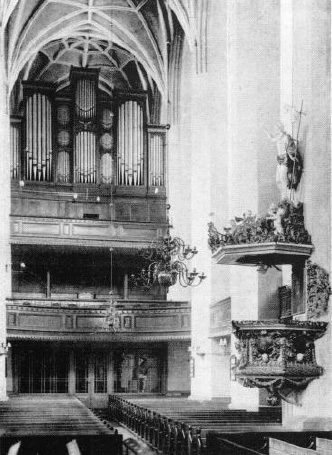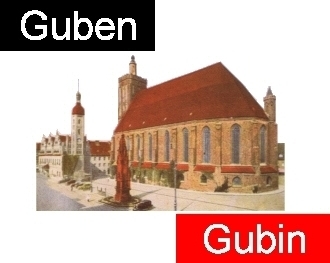
The organ has had various locations in the history of the church. The first was above the sacristy. This room was also called the „old organ“. Presumably this organ was not so special, because in 1581 it had been moved by an inexperienced organ builder named Nicolaus Herrmann. Since this had not worked, a new organ was built by Johann Langen, from Camenz. He did not finish it until 1582, as new organ pipes were also needed.
A few years later, in 1608-1610, the organ was enlarged.
In 1659, the organ was not only improved once again, but also relocated above the pupils‘ choir and brought to the place where it stood until its end, directly opposite the high altar. After it had sounded for the first time at the thanksgiving feast, which was celebrated because of the Turks who had been happily beaten out of the field, it was consecrated after completion and renewal at the Michaelmas feast.
In 1708, the organ was improved again by the organ builder Nelten, a local citizen, and a new Vox humana stop was added.
In 1732, Mr. Tamizius, an organ builder from Zittau, repaired it again and changed and renewed some of the stops.
In 1764, the organ was also improved by an organ builder from Sorau, together with his son-in-law. The organ then had 36 stops, 4 in the Brust-Positiv to the Ober-Klavier, 10 in the Ober-Werk to the middle piano, 5 in the Pedal to the Untersatz and 3 in the Pedal on both sides and 14 in the Rück-Positiv.
In 1800, the organ was repaired by organ builder Gast from Bahro.
Quelle:
Andreas Peter: Die Stadt- und Hauptkirche in Guben/Gubin
– Eine Bau- und Kulturgeschichte. Niederlausitzer Verlag, Guben 2007,
ISBN 978-3-935881-48-7. (100 Seiten, über 50 s/w-Abbildungen)
WIR SUCHEN STÄNDIG
Fotos, Negative, Zeichnungen, Urkunden, Dokumente, Filme, Zeitzeugen, Unterstützer, Aktive

